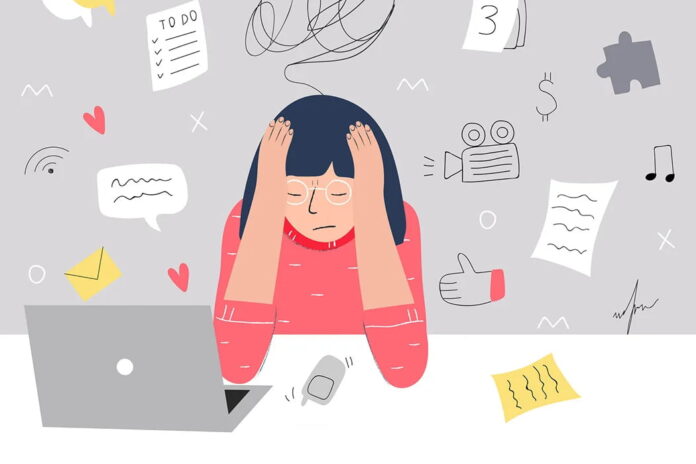ADHD, or Attention-Deficit Hyperactivity Disorder, can be difficult to treat. It is incredibly challenging for adults and children because it affects their daily lives differently than most other disorders due to its wide range of symptoms that vary in type and intensity. However, despite the difficulty of treating ADHD, many strategies are available to help manage it in adults and children. In this blog post, we’ll explore five practical strategies for managing ADHD that may help you or your loved ones navigate the day-to-day challenges of this disorder. However, if it is getting hard for you to deal with ADHD, you should see your medical healthcare provider or visit Health2delivery.
1. Identify the Symptoms of ADHD in Adults and Children
Attention deficit/hyperactivity disorder (ADHD) is a common mental health condition affecting adults and children. It is essential to be aware of the signs and symptoms of ADHD so that individuals can get appropriate medical assistance with managing their condition. In adults, symptoms of ADHD may include difficulty focusing, organising tasks, disorganisation, restlessness and impulsivity. In children, these symptoms are often shown in hyperactive behaviours such as fidgeting, excessive talking or running around, and poor performance at school or socially. If any of these symptoms sound familiar, speaking to a doctor is recommended to understand further the potential diagnosis and strategies for improving quality of life.
2. Discuss Treatment Options with Your Healthcare Provider
If you or your child have been diagnosed with Attention Deficit Hyperactivity Disorder (ADHD), learning about all available treatment strategies is essential. This type of discussion should take place between you and your healthcare provider to ensure the most appropriate course of action is taken for your individual needs. During this conversation, it’s good to be aware of the five common strategies for treating ADHD—such as lifestyle modifications and behaviour therapy—to make an informed decision regarding the best path forward. You must also ask your healthcare provider any questions that arise during the discussion, so they can provide clarity and more details as needed. Making this connection and open communication is critical when determining how best to manage ADHD symptoms.
3. Utilise Cognitive-Behavioral Therapy Strategies
Cognitive-Behavioral Therapy (CBT) is an evidence-based approach to treating attention deficit/hyperactivity disorder (ADHD) in adults and children. CBT interventions focus on identifying and changing thinking patterns, behaviours, and emotions and developing skills for managing symptoms. Research has shown that when used alone or as an adjunct to medication, CBT strategies are effective in treating ADHD symptoms. In addition, mental health professionals may employ techniques such as:
- Problem-solving
- Goal setting
- Relaxation training
- Self-talk
- Mindfulness training
- Role-playing
Through this therapy modality, adults and children can learn how to identify their ways of thinking that perpetuate ADHD symptoms, develop skills for better self-regulation of behaviour and emotions, set realistic goals for improvement and ultimately take control of their lives.
4. Incorporate Behavioral Modification Techniques
Behavioural modification techniques can be an effective method of addressing Attention Deficit Hyperactivity Disorder (ADHD) both in adults and children. These techniques involve teaching individuals the skills they need to manage their symptoms, helping them to build new routines. For example, behaviour charts reinforce completing tasks or engaging in positive activities. Break down long-term goals into smaller attainable goals and schedule regular check-ins to monitor progress and see how far an individual has achieved their objectives. Parents can even play an active role in helping them with behaviour, such as providing rewards for good performance, promoting healthy habits, and discouraging negative behaviours. Multi-faceted strategies like these should be taken into consideration when exploring methods of ADHD treatment.
5. Develop Coping Mechanisms to Manage Symptoms
One of the most important strategies for treating ADHD in adults and children is to develop effective coping mechanisms to help manage symptoms. Many of these strategies are simple yet powerful enough to have a significant effect on the way that people deal with their condition. For example, developing new life skills like organising, setting realistic goals and maintaining schedules can significantly help those with ADHD improve their ability to handle everyday tasks. In addition, practising relaxation techniques such as deep breathing, progressive muscle relaxation, or mindfulness has also helped manage symptoms associated with ADHD. As individuals learn various coping methods that cater to their needs, they can better recognise their triggers and behaviours, thus allowing them to gain greater control over their lives.
6. Find Support from Friends and Family Members
Coping with a condition such as ADHD can be difficult, so having a solid support system of friends and family to rely on is critical. Research suggests that creative problem-solving, encouragement, and insight shared by friends and family members can significantly aid in managing the symptoms associated with ADHD. Educating oneself about ADHD, creating reasonable expectations for loved ones and seeking out understanding from those closest to you are all beneficial strategies for treating ADHD. Building relationships with supportive individuals who understand your difficulties and goals will foster an environment that helps boost self-confidence. Finding support from friends and family members may not always be easy, but it is critical to address your needs holistically while living with ADHD.
Conclusion
Ultimately, it is essential to understand the need to identify and implement strategies for treating ADHD in adults and children. It is necessary to be aware of potential symptoms associated with ADHD, speak to healthcare providers about treatment options, utilise CBT strategies and behavioural modification techniques, and develop coping mechanisms. Additionally, finding support from friends and family members can be critical in managing the challenges of living with ADHD. By following these five strategies, adults and children can more successfully navigate their journey with ADHD.
Virtual medical scribing offers excellent potential to improve healthcare delivery. As technology progresses, virtual scribing will become essential to the healthcare scene. Healthcare companies can use virtual medical scribing to improve outcomes and provide superior care to patients by embracing the benefits, solving the difficulties, and applying best practices.
Read Also
- How to Drive Growth Through Customer Centricity in HealthcareThe world of healthcare is changing in big ways. Consumers are now stepping up and taking charge of their health journeys. This change is happening now for important reasons. The U.S. health and wellness market is huge, projected to be over $6 trillion in 2025. This growth is fueled by rising out-of-pocket costs and more… Read more: How to Drive Growth Through Customer Centricity in Healthcare
- Maximizing Digital Reach for Podiatry Clinics in Local HealthcareMaximizing Digital Reach for Podiatry Clinics in Local Healthcare As the healthcare industry evolves, mobile marketing becomes indispensable for practitioners. Podiatry clinics, focusing on foot and ankle care, must adapt to digital strategies to engage patients effectively. Implementing tailored SEO practices is crucial for these clinics to thrive in an increasingly competitive market. Digital marketing… Read more: Maximizing Digital Reach for Podiatry Clinics in Local Healthcare
- Leveraging Virtual Medical Assistants to Maximize Operational Efficiency in HealthcareIn the increasingly complex and fast-paced world of healthcare, operational efficiency is critical. Doctors and healthcare administrators are faced with numerous challenges, from managing patient scheduling and medical billing to adhering to stringent regulatory compliance and insurance claims processing. These tasks, while essential, often divert time and resources away from the core mission of providing… Read more: Leveraging Virtual Medical Assistants to Maximize Operational Efficiency in Healthcare
- Optimizing CT Protocols: The Hidden Key to Efficiency and Cost Savings in RadiologyIntroduction: Why CT Protocol Optimization Matters Computed Tomography (CT) is a cornerstone of modern diagnostic imaging, providing critical information across nearly every medical specialty. However, maximizing the value of CT — both clinically and financially — requires more than just advanced hardware. The real secret lies in the optimization of CT protocols. When CT protocols… Read more: Optimizing CT Protocols: The Hidden Key to Efficiency and Cost Savings in Radiology
- Hospital Discharge Accuracy Improves With Daily Advisor InvolvementThe hospital discharge process has a big effect on patient recovery, hospital efficiency, and finances. It requires careful planning and clear communication between team members to make sure patients get the right care when they leave the hospital. Having physician advisors involved at this stage can improve the discharge process by spotting problems that need… Read more: Hospital Discharge Accuracy Improves With Daily Advisor Involvement
- Understanding Clinical Trials: What to Learn and the RoadblocksClinical trials are research studies conducted to determine the efficacy of medical, surgical or behavioral interventions. They are the most commonly used way that researchers assess whether new treatments, drugs or medical devices are safe and effective for use in humans. There are strict protocols governing these studies, and all of this is done in such a… Read more: Understanding Clinical Trials: What to Learn and the Roadblocks







